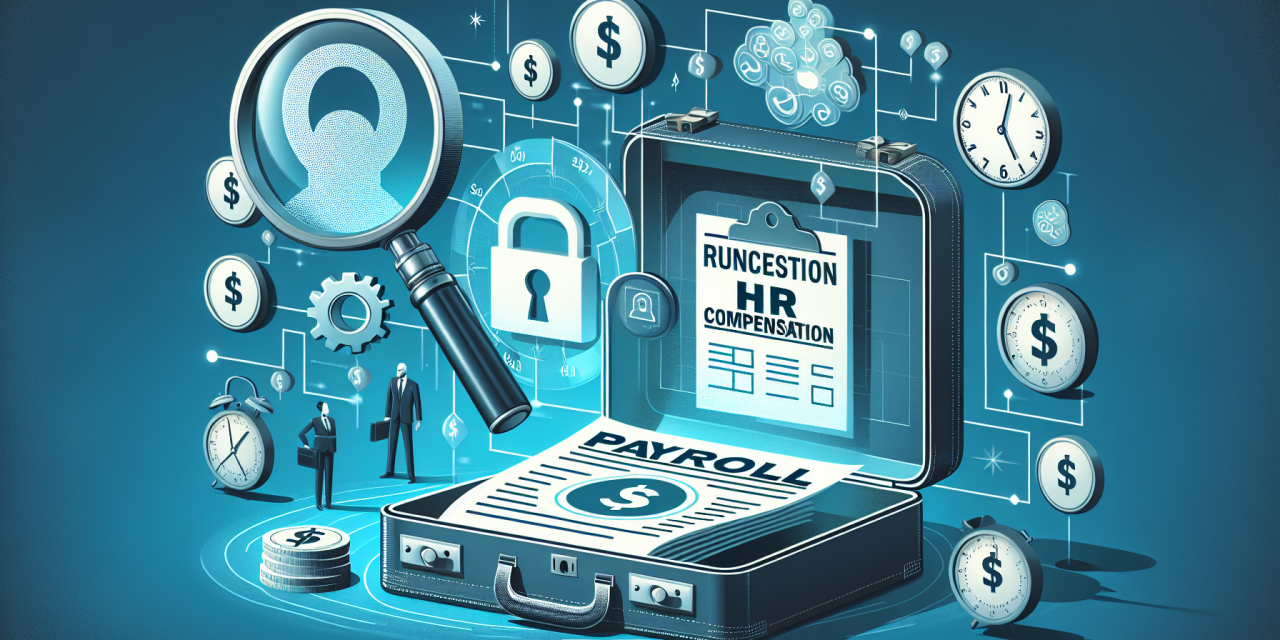Table of Contents
- 1. Introduction
- 2. Understanding HR Compensation Packages
- 3. Components of Compensation Packages
- 4. The Importance of Payroll Structure
- 5. Navigating the Challenges of Compensation and Payroll
- 6. Key Insights from the Conference
- 7. Additional Resources
- 8. FAQs
- 9. Conclusion
1. Introduction
As businesses evolve and the workforce becomes more dynamic, the relevance of robust HR compensation packages and payroll structures cannot be overstated. These elements are not mere administrative necessities; they serve as strategic tools that foster engagement, attract talent, and drive employee satisfaction. Therefore, staying informed on these topics is crucial for HR professionals and organizational leaders alike.
2. Understanding HR Compensation Packages
HR compensation packages encompass more than just salaries. They represent a comprehensive system that organizations use to reward their employees for their contributions. In addition to base pay, compensation packages may include bonuses, stock options, health insurance, retirement plans, and other benefits. This multifaceted approach helps align the interests of the employee and the organization.
Why HR Compensation Matters
An effective compensation package not only motivates employees but also strengthens their commitment to the organization. When team members feel valued and well-compensated, they are more likely to be productive and engage in their work fully. Additionally, offering competitive compensation packages helps attract top talent in a competitive job market.
3. Components of Compensation Packages
A well-structured compensation package consists of various elements, each playing a critical role in an employee’s total rewards. Below are the main components typically included:
Base Salary
Base salary is the guaranteed amount an employee receives for their work, which varies based on factors such as experience level, job role, and location. While base salary represents the cornerstone of compensation, it is often not sufficient by itself to attract and retain top talent.
Bonuses and Incentives
Bonuses are additional payments intended to reward employees for achieving specific targets or demonstrating exceptional performance. Incentives can motivate employees to reach business goals, ultimately benefiting the organization as a whole.
Benefits and Perks
Employee benefits may include health insurance, dental plans, retirement savings options, paid time off, flexible work arrangements, and wellness programs. Perks, such as gym memberships or educational reimbursements, can also enhance employee satisfaction and contribute to a positive company culture.
4. The Importance of Payroll Structure
Payroll structure refers to the systems and processes organizations use to manage employee compensation, from calculating pay rates to processing payroll payments. A well-organized payroll structure leads to higher efficiency and compliance with labor laws.
Accuracy and Timeliness
One critical aspect of payroll structure is the accuracy of compensation calculations. Errors in payroll can lead to employee distrust and dissatisfaction. Moreover, timely payments are crucial; employees depend on receiving their salaries on time to meet their financial obligations.
Compliance with Legislation
Organizations must adhere to various regulations regarding compensation. This may include minimum wage laws, overtime pay rules, and tax compliance. Utilizing a robust payroll structure can help ensure compliance with these legal obligations, thereby preventing potential legal issues.
5. Navigating the Challenges of Compensation and Payroll
The complexities of compensation and payroll management can present various challenges for HR professionals. However, understanding these challenges allows organizations to tackle them proactively.
Market Competitiveness
Keeping compensation packages competitive is vital in retaining talent. Organizations must continually evaluate their compensation strategies against industry standards and adjust them as necessary to stay attractive to skilled professionals.
Employee Communication
Transparency in how compensation packages are structured can alleviate misunderstandings. HR professionals should regularly communicate the details of compensation packages and any changes to employees. This fosters a sense of trust and openness within the organization.
6. Key Insights from the Conference
The HR Compensation Package & Payroll Structure Conference gathered industry experts, HR leaders, and business strategists to discuss trends and best practices in compensation and payroll management. Here are some of the key insights that emerged from the discussions:
Adapting to a Changing Workforce
With the rise of remote work and gig economy jobs, HR professionals must adapt their compensation strategies to meet the expectations of diverse workers. Flexibility and inclusivity in compensation packages can enhance employee satisfaction and retention.
The Role of Technology
Innovative technologies can streamline compensation and payroll processes. Automation, cloud-based systems, and employee self-service platforms can improve accuracy and efficiency in payroll management, allowing HR to focus on strategic initiatives.
7. Additional Resources
For those looking to further explore related topics, consider the following articles:
- Essential Skills for Working in Teams: Fueling Passion & Unlocking Potential
- Transforming Your Business: Developing a Customer-Centric Organization Beyond Traditional Customer Service
- Mastering the Art of Planning, Organizing, and Delegating: Unlock Your Team’s Potential
- Strategic Change Management for HR Professionals: Navigating the Future Successfully
- Mastering Budget Management for a Successful Business: Conference Tips and Strategies
8. FAQs
What is included in a typical HR compensation package?
A typical HR compensation package includes base salary, bonuses, benefits (like health insurance and retirement plans), and perks that enhance the employee experience.
Why is payroll structure important for businesses?
A well-defined payroll structure ensures accuracy in payments, compliance with legal requirements, and timely disbursement. This fosters employee trust and satisfaction.
How can organizations keep their compensation packages competitive?
Organizations can keep their compensation packages competitive by regularly reviewing industry standards, soliciting employee feedback, and adjusting their offerings accordingly.
9. Conclusion
In conclusion, effective HR compensation packages and payroll structures form the backbone of any successful organization. By understanding the components and importance of these elements, navigating challenges, and incorporating insights from industry experts, organizations can attract and retain a dedicated workforce. Moreover, leveraging resources and continuous learning will further enhance HR practices, ultimately leading to a thriving business.





